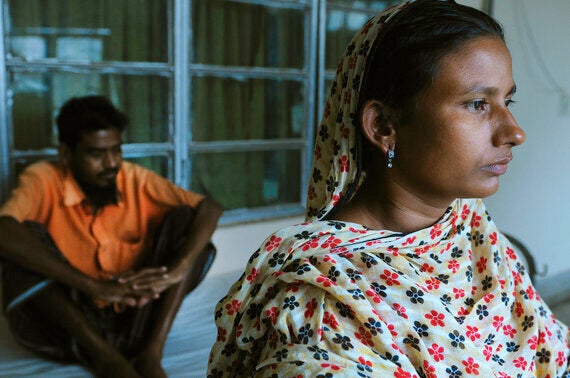Stillbirth is a difficult topic. There are no words to express the devastation or to ease the crushing pain of a loved one going through the tragedy of losing a child at birth. For many women, such a real, painful and damaging experience is exacerbated even further by a sense that, as far as the rest of the world is concerned, your child never existed. Over the past decade the world has made great progress halving the rate of child and maternal deaths, but we have seen little improvement with stillbirth rates. Every year 2.6 million babies are stillborn: every day 7,300 women suffer the loss of their babies during the last 3 months of pregnancy. Yet stillbirths remain neglected, overlooked and bundled together with statistics of child deaths and summarily forgotten.

© 2000 Ismail Ferdous, Courtesy of Photoshare
We need to start talking about stillbirths. On Tuesday, 19 January The Lancet will launch its Ending Preventable Stillbirths series: five papers written by a collaboration of 216 authors and advisers from over 40 countries, representing over 100 organizations. The series lays out the status of stillbirths today and sets out the path to ending preventable stillbirths by 2030. We need to start a new conversation, and we need to match that conversation, with action.
In September 2015, the Every woman Every Child movement pledged to end preventable deaths among all women, children and adolescents by 2030 launching an updated Global Strategy for Women's, Children's and Adolescents' health. This pledge includes a commitment to take action on stillbirths, and address the long lasting negative knock on effects on maternal and mental health, families, caregivers and society at large.
The Global Strategy points out that the provision of effective care in facilities for women and babies at the time of birth could save lives and prevent 531,000 stillbirths annually by 2020. We know that providing quality care at birth yields a triple return on investments, saving the lives of mothers and babies, and preventing stillbirths. The Global Strategy also stresses the importance of investing in health systems alongside high-impact health intervention to prevent 32 million stillbirths by 2035.
We know what needs to be done, and now is the moment to seize this tremendous opportunity to save lives. Action on stillbirth is essential not only to achieve the goals of the Global Strategy, but also to meet the ambitious targets of our new global goals. Goal 3 of the Sustainable Development Goals -- to achieve good health and wellbeing --and other goals on gender equality and inequities will only be met if we scale up action on all aspects of women's, children's and adolescents' health. We must keep stillbirths on the global agenda and ensure that action to prevent stillbirths and provide quality bereavement care for women and families is at the centre of implementation plans. The Partnership has campaigned long and hard for attention to stillbirths. Now we must monitor the Global Strategy for progress on stillbirths and hold each other to account for action. The Partnership's new Strategic Plan commits us to accelerate action, to gather learning and evidence and continue our advocacy to end stillbirths.
Stillbirth does not have to be a difficult topic. We need to end the silence. We cannot keep silent and let women and families drown in overwhelming feelings of grief and helplessness. Every mother deserves a joyful birthing experience and every newborn deserves a healthy and fulfilling life. If we are to truly achieve our new Global Goals and secure the future we want every woman, every child, every adolescent, everywhere, then now is time to break the silence around stillbirths.